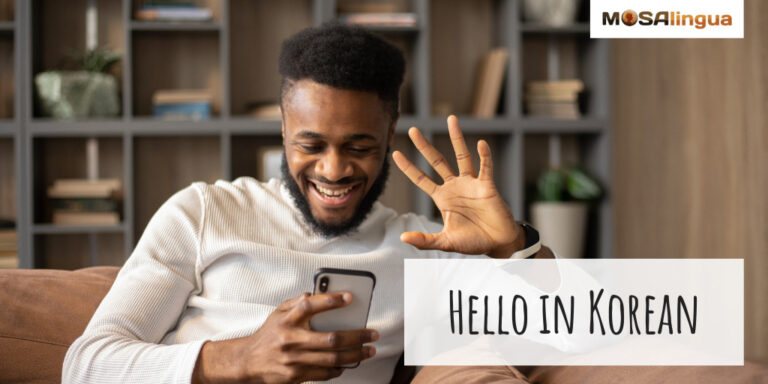Mastering basic words and expressions to greet people is a crucial step for anyone who is learning Korean. Whether you’re learning the language for travel, work, or study, you’ll need a strong foundation of basic vocabulary. This article will introduce several different ways that you can say “hello” in Korean, as well as a few other good ways to greet people and kick off your first conversations.

Learn How to Say “Hello” in Korean in Different Contexts
If you’d like to improve your Korean fluency and sound more natural, keep reading! Today, you’ll learn how to say “hello” in this beautiful language and review a few social codes that should help you avoid committing any faux pas.
As you’ll see below, there are a few different ways to greet people in Korean depending upon the context (formal vs. informal), the time of day, and the status of the person you’re addressing.
In Korean, you can say “hello” in many different ways, depending upon the formality of the situation. Here are a few of the most common expressions:
Formal situations
- 안녕하세요 (annyeonghaseyo)
Listen & repeat:
This is the most common and most polite way to greet a person in Korean. You’ll use it in formal situations, or whenever you address elders or strangers.
- 반갑습니다 (bangapseumnida)
Listen & repeat:
This expression means “it’s a pleasure to meet you” and is used when you’re meeting a person for the first time, or in a formal situation. It’s a polite way to start a conversation and to show your interest in the speaker.
- 여보세요 (yeoboseyo)
You can use this greeting to answer a phone call. It’s another polite way to open a conversation.
Informal situations
- 안녕 (annyeong)
Listen & repeat:
This is a more informal expression, often used to greet close friends, family members, and peers.
- 반가워 (bangawo)
Listen & repeat:
Another way to say “pleased to meet you.” It’s less formal than 반갑습니다 (bangapseumnida) but is still a nice, friendly way to acknowledge someone.
“Good Morning” in Korean
- Good morning: 좋은 아침이에요 (joeun achimieyo)
Listen & repeat:
This sentence is polite and formal. But if you’re greeting a friend or loved one, you can use this shortened version:
- Good morning: 좋은 아침 (joeun achim)
These are just a few of the many ways to start a conversation in Korean. Don’t forget that the appropriate expression will be dictated by the level of formality of the situation and your relationship with the person you’re speaking to. To learn a bit more about the nuances of Korean manners and how to greet people politely, watch this video by Talk To Me In Korean.
Next Steps
Learning to say “hello” in Korean is an important skill whether you’re learning the language, or simply planning a vacation to South Korea. Even if you’re not committing to study the language long-term, knowing how to greet people in their local language is a nice gesture, and not too difficult to master. It’s an easy way to show people that you have an interest in and appreciation for their culture.
If you enjoyed this article, you might also like:
- 6 Quick Tips on How to Learn Korean More Effectively
- 8 Great Language Hacks to Make Learning a Lifestyle




Comments